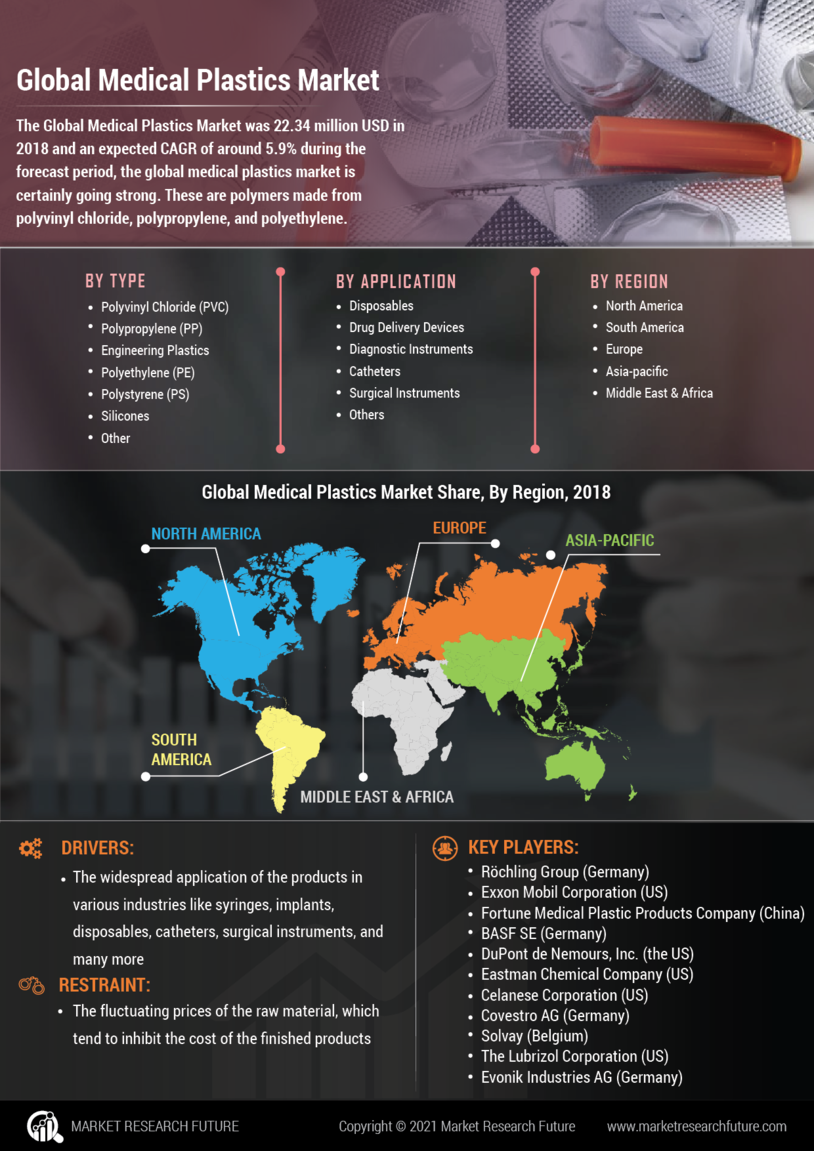Growing Aging Population
The growing aging population is a significant driver of the Medical Plastics Market. As the global demographic shifts towards an older population, the demand for medical devices and healthcare services is expected to rise. Older adults typically require more medical interventions, leading to an increased need for various medical devices, many of which utilize plastic components. The Medical Plastics Market is likely to benefit from this trend, as it is projected that by 2030, nearly 1 in 6 people will be aged 60 years or older. This demographic shift underscores the necessity for durable, lightweight, and cost-effective medical solutions, further propelling the market.
Regulatory Support and Compliance
Regulatory support and compliance play a crucial role in shaping the medical plastics market. Stringent regulations governing medical devices necessitate the use of high-quality materials that meet safety and efficacy standards. Regulatory bodies are increasingly emphasizing the importance of using approved plastics in medical applications, which drives manufacturers to invest in compliant materials. This focus on regulatory adherence is expected to propel the Medical Plastics Market, as companies that prioritize compliance are likely to gain a competitive edge. Moreover, the anticipated updates to regulations may further enhance the demand for innovative plastic solutions that meet evolving standards.
Advancements in Polymer Technology
Advancements in polymer technology are significantly influencing the medical plastics market. Innovations in materials science have led to the development of high-performance polymers that exhibit superior biocompatibility, durability, and resistance to sterilization processes. For instance, the introduction of bio-based and biodegradable plastics is gaining traction, aligning with the industry's sustainability goals. The Medical Plastics Market is projected to witness a compound annual growth rate (CAGR) of around 6% through 2027, driven by these technological advancements. As manufacturers increasingly adopt these innovative materials, the potential for enhanced product offerings and improved patient outcomes becomes apparent, thereby expanding market opportunities.
Increased Focus on Healthcare Infrastructure
The increased focus on healthcare infrastructure is driving growth in the Medical Plastics Market. Governments and private sectors are investing heavily in healthcare facilities to improve access and quality of care. This investment often includes the procurement of advanced medical devices, many of which rely on plastic materials for their construction. The Medical Plastics Market stands to gain from these developments, as enhanced healthcare infrastructure is likely to lead to higher demand for medical devices. Furthermore, the ongoing expansion of telemedicine and remote healthcare services may also contribute to the need for innovative plastic solutions that facilitate these new healthcare delivery models.
Rising Demand for Disposable Medical Devices
The increasing demand for disposable medical devices is a primary driver of the Medical Plastics Market. As healthcare providers seek to minimize the risk of infections and enhance patient safety, the preference for single-use products has surged. This trend is reflected in the projected growth of the disposable medical device segment, which is expected to reach a valuation of approximately 200 billion USD by 2026. The Medical Plastics Market benefits from this shift, as plastics are favored for their lightweight, cost-effective, and versatile properties. Furthermore, the ongoing advancements in polymer technology are likely to enhance the performance of these disposable devices, further solidifying their position in the market.


















Leave a Comment